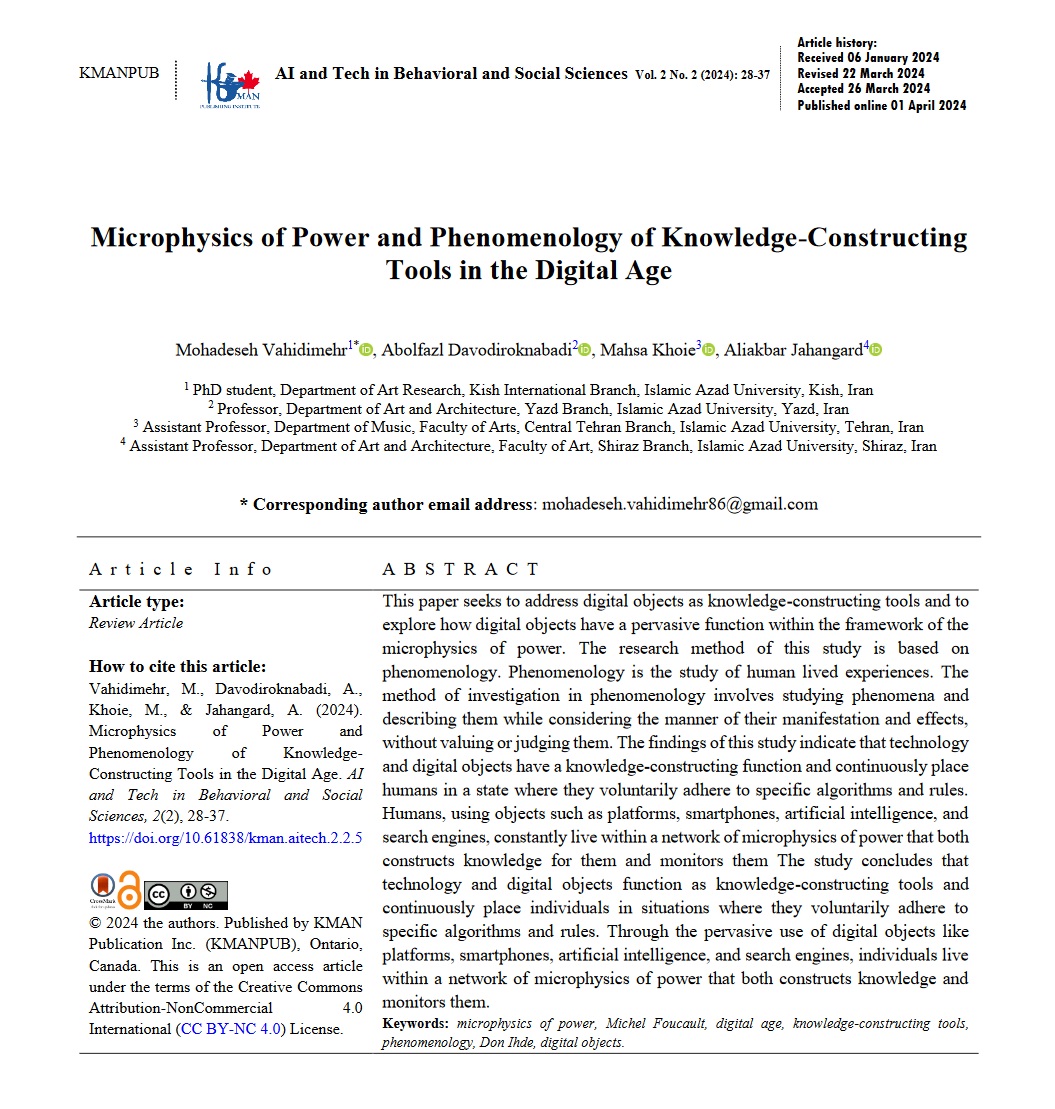Microphysics of Power and Phenomenology of Knowledge-Constructing Tools in the Digital Age
DOI:
https://doi.org/10.61838/kman.aitech.2.2.5Keywords:
microphysics of power, Michel Foucault, digital age, knowledge-constructing tools, phenomenology, Don Ihde, digital objectsAbstract
This paper seeks to address digital objects as knowledge-constructing tools and to explore how digital objects have a pervasive function within the framework of the microphysics of power. The research method of this study is based on phenomenology. Phenomenology is the study of human lived experiences. The method of investigation in phenomenology involves studying phenomena and describing them while considering the manner of their manifestation and effects, without valuing or judging them. The findings of this study indicate that technology and digital objects have a knowledge-constructing function and continuously place humans in a state where they voluntarily adhere to specific algorithms and rules. Humans, using objects such as platforms, smartphones, artificial intelligence, and search engines, constantly live within a network of microphysics of power that both constructs knowledge for them and monitors them The study concludes that technology and digital objects function as knowledge-constructing tools and continuously place individuals in situations where they voluntarily adhere to specific algorithms and rules. Through the pervasive use of digital objects like platforms, smartphones, artificial intelligence, and search engines, individuals live within a network of microphysics of power that both constructs knowledge and monitors them.
Downloads





